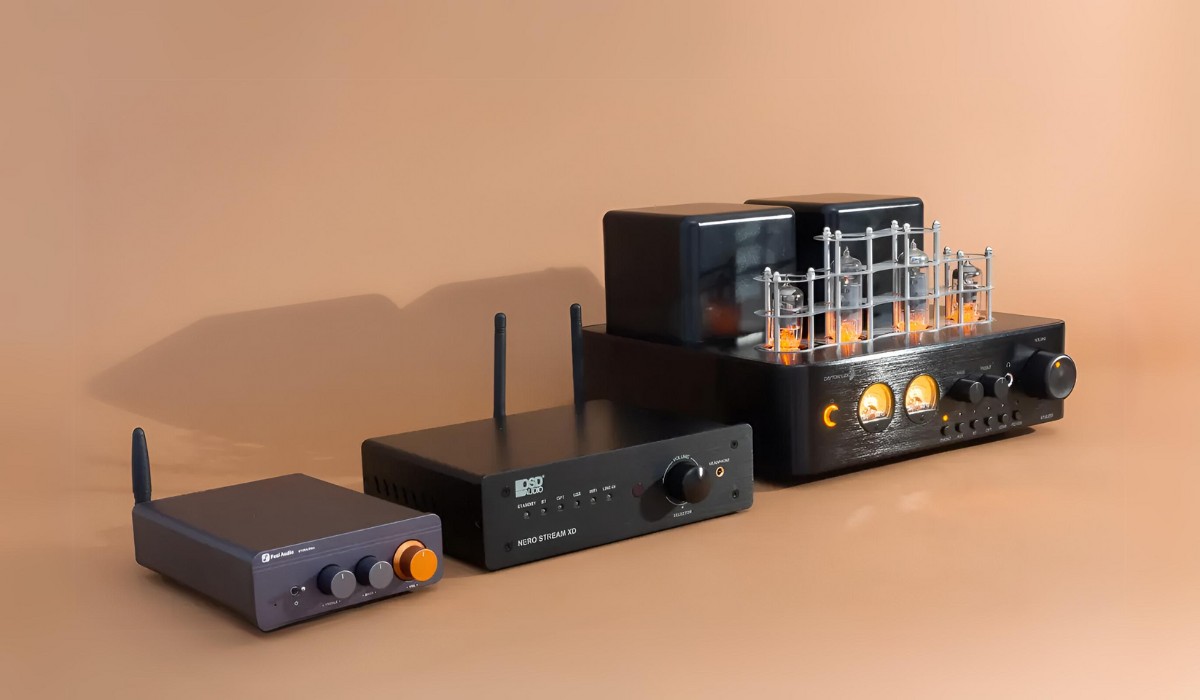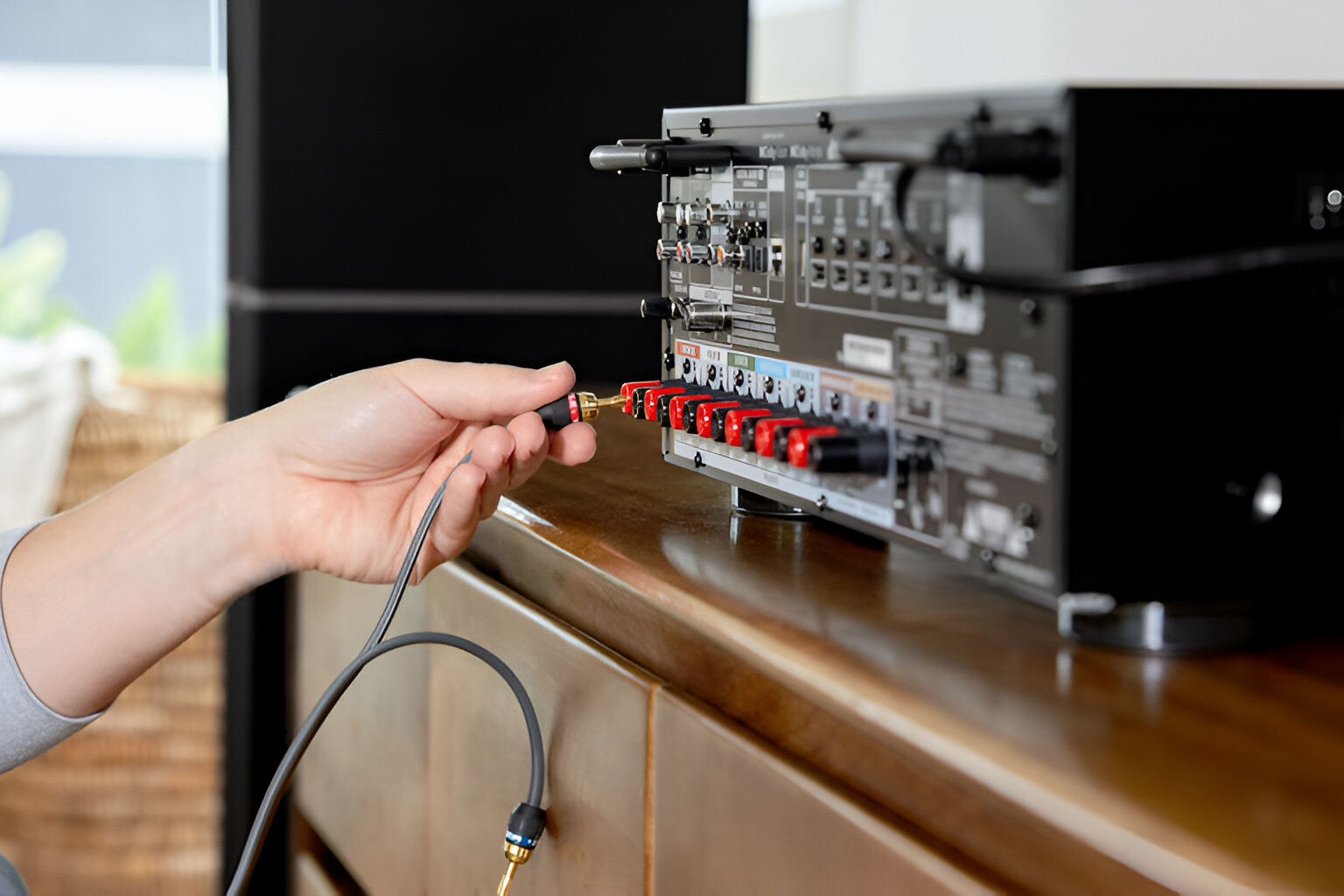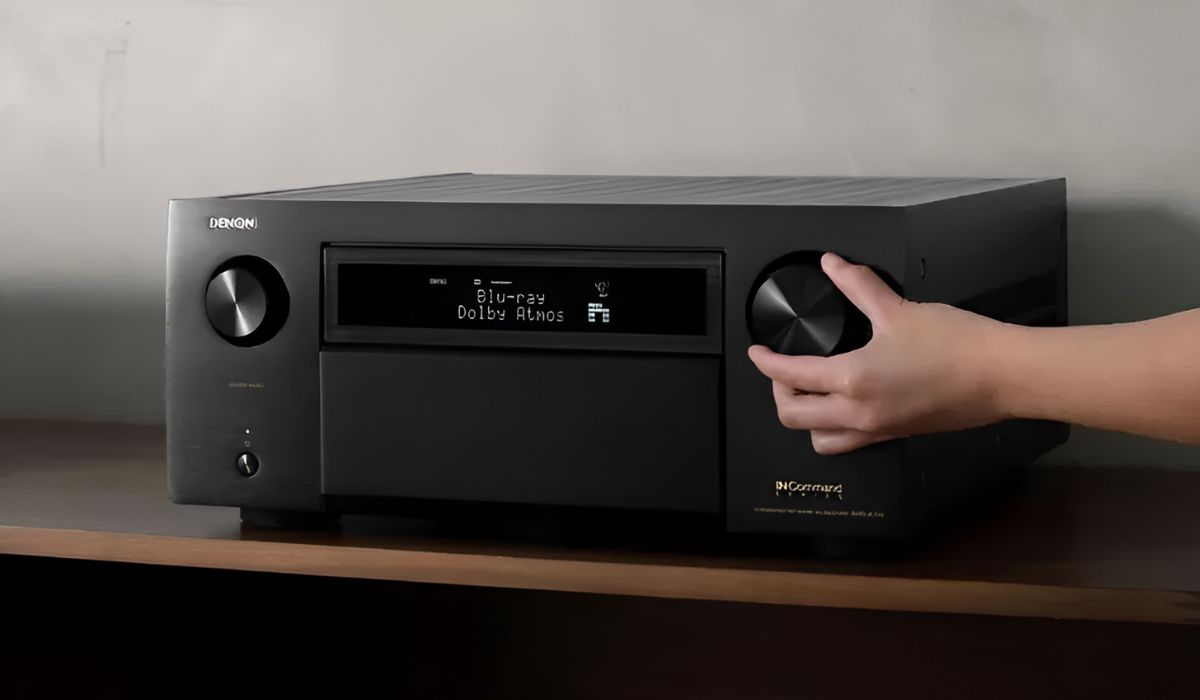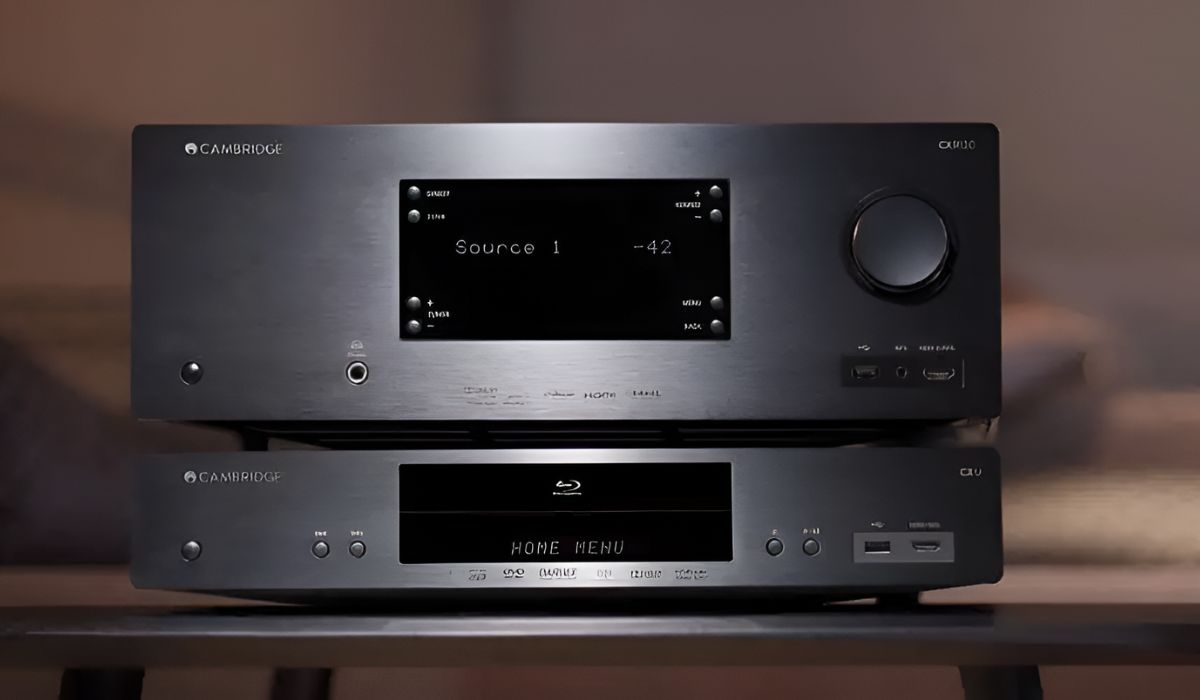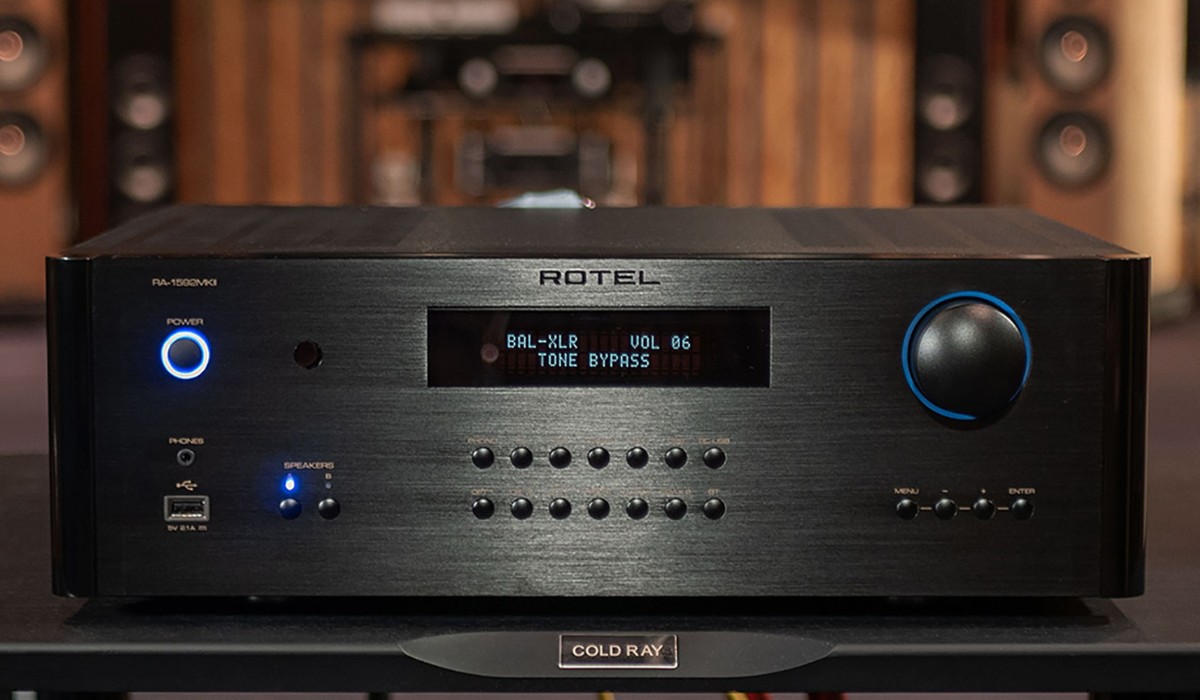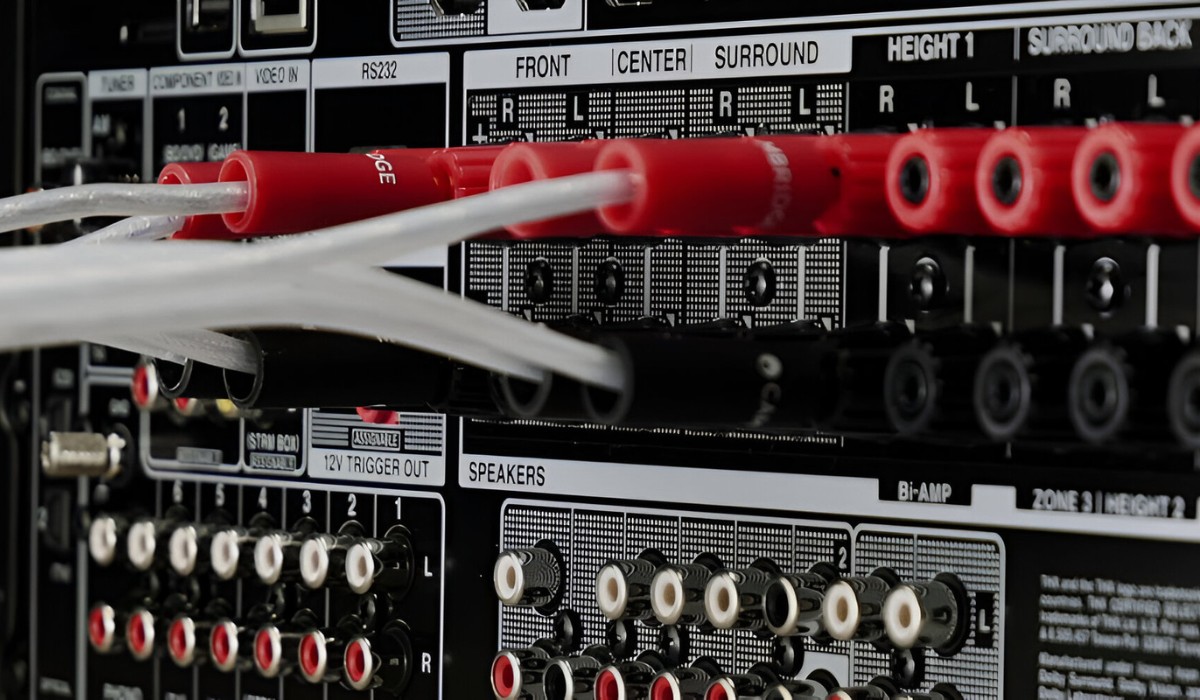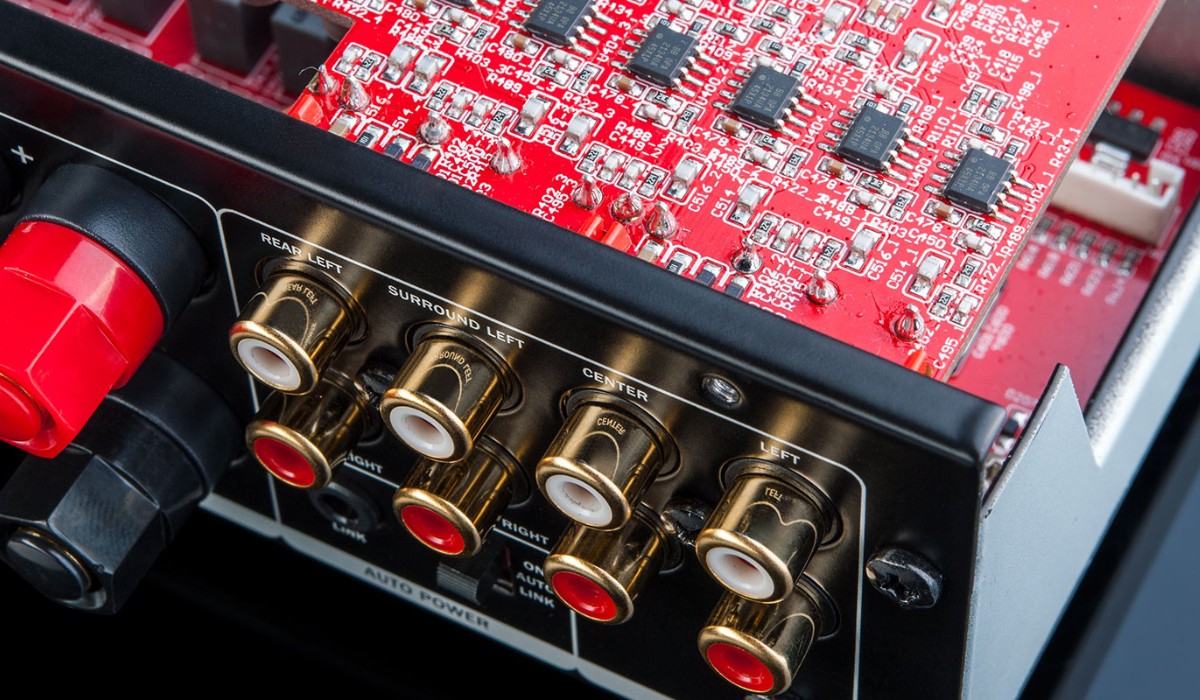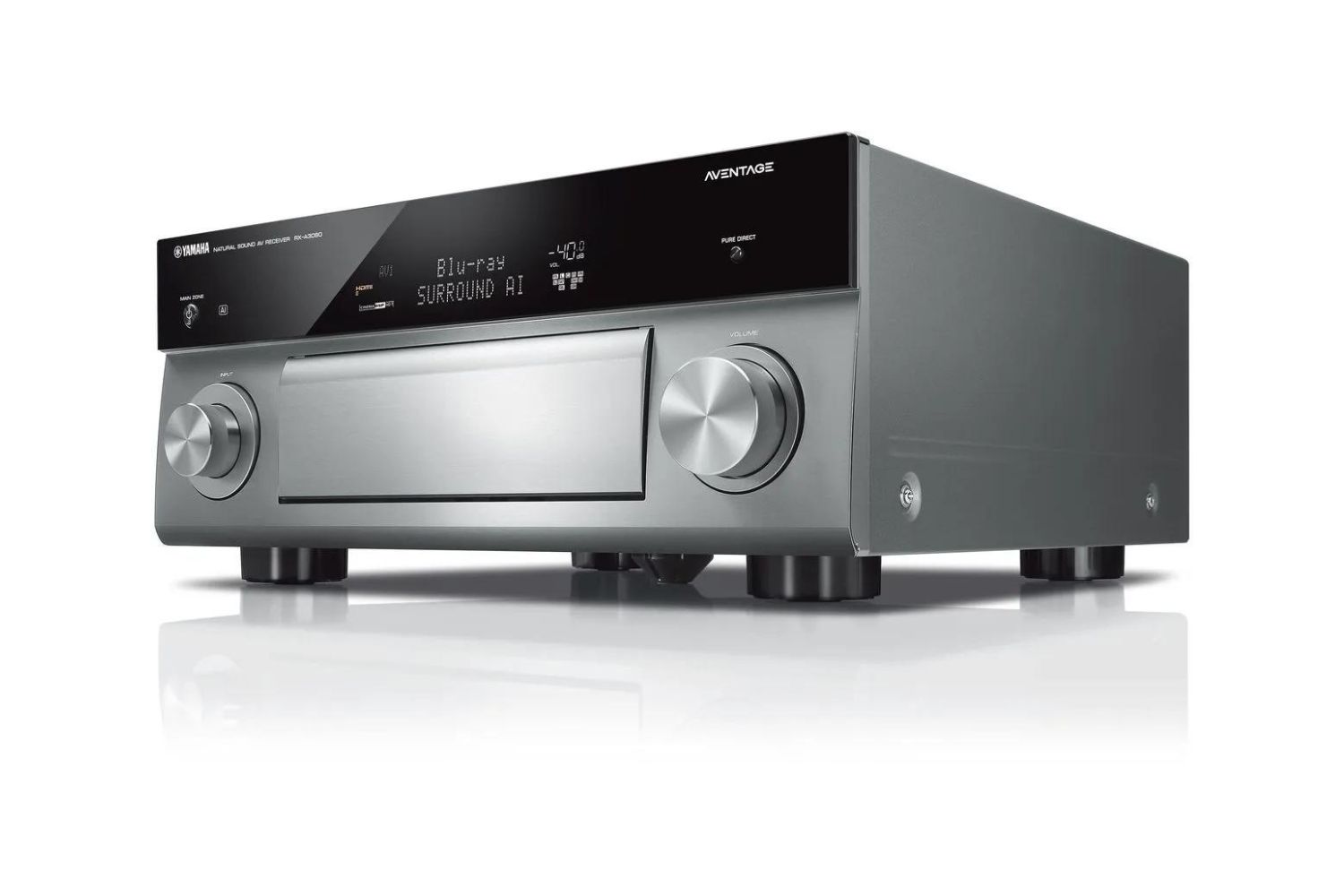Introduction
Welcome to the world of high-fidelity audio! If you're looking to elevate your home entertainment experience, integrating an AV receiver with a power amplifier can significantly enhance the quality of sound reproduction. This comprehensive guide will walk you through the process of using an AV receiver with a power amplifier, from understanding the fundamentals to troubleshooting common issues. Whether you're a seasoned audiophile or just venturing into the realm of premium audio equipment, this guide will equip you with the knowledge to optimize your audio setup for an immersive listening experience.
The combination of an AV receiver and a power amplifier offers a dynamic synergy that brings out the best in your speakers, delivering rich, detailed sound that elevates your music, movies, and gaming experiences. By harnessing the capabilities of these two essential components, you can unlock the full potential of your audio system, immersing yourself in captivating soundscapes with pristine clarity and power.
Throughout this guide, you'll gain insights into the intricacies of connecting, setting up, and fine-tuning an AV receiver with a power amplifier, empowering you to harness the full potential of your audio equipment. Whether you're aiming to create a dedicated home theater or a high-fidelity stereo setup, understanding the symbiotic relationship between an AV receiver and a power amplifier is crucial for achieving sonic excellence.
So, let's delve into the world of AV receivers and power amplifiers, unraveling the seamless integration and optimization of these components to unlock a new dimension of audio bliss. Whether you're a music aficionado, a movie enthusiast, or a gaming connoisseur, the fusion of an AV receiver and a power amplifier is poised to elevate your auditory experience to unprecedented heights.
Understanding AV Receivers and Power Amplifiers
Before delving into the practical aspects of connecting and utilizing AV receivers with power amplifiers, it’s essential to grasp the distinct roles and functionalities of these two components in the realm of audio reproduction.
AV Receivers:
- An AV receiver serves as the central hub of your home audio system, integrating various audio and video sources, such as Blu-ray players, gaming consoles, streaming devices, and cable boxes.
- Equipped with built-in amplification, signal processing, and audio/video switching capabilities, AV receivers act as the nerve center that orchestrates and distributes audio and video signals to connected speakers and display devices.
- Furthermore, modern AV receivers are designed to support advanced audio formats, including Dolby Atmos, DTS:X, and IMAX Enhanced, offering immersive, three-dimensional sound for a captivating home theater experience.
Power Amplifiers:
- Power amplifiers, on the other hand, are dedicated to amplifying audio signals with precision and power, driving the speakers to produce sound with optimal clarity and impact.
- Unlike AV receivers, power amplifiers are specialized in delivering high-current, low-impedance power to speakers, ensuring faithful reproduction of audio signals without distortion, particularly at higher volumes.
- By offloading the task of amplification from the AV receiver to a dedicated power amplifier, you can enhance the overall dynamics, detail, and headroom of your audio system, resulting in a more authoritative and articulate sound performance.
By understanding the distinct functions of AV receivers and power amplifiers, you can appreciate their complementary roles in achieving a cohesive and high-fidelity audio setup. The synergy between these components forms the cornerstone of a robust and immersive audio environment, whether for music listening, home theater enjoyment, or gaming escapades.
With this foundational knowledge in place, you’re primed to explore the seamless integration of AV receivers and power amplifiers, harnessing their collective capabilities to elevate your audio experience to new heights.
Connecting AV Receiver to Power Amplifier
Connecting an AV receiver to a power amplifier involves establishing a seamless interface between these two pivotal components to optimize the amplification and distribution of audio signals. By following a few fundamental steps, you can ensure a robust and efficient connection that lays the groundwork for an enhanced audio experience.
1. Identify Audio Outputs:
Prior to making any physical connections, identify the audio output terminals on your AV receiver. These outputs are typically labeled as “Pre-Out” or “Zone Out” and serve as the source for the audio signals that will be sent to the power amplifier for amplification.
2. Locate Audio Inputs on Power Amplifier:
Correspondingly, locate the audio input terminals on your power amplifier. These inputs may be labeled as “Main In” or “Amplifier In” and are designed to receive the pre-amplified audio signals from the AV receiver.
3. Utilize Interconnect Cables:
Connect the pre-out terminals of the AV receiver to the amplifier in terminals of the power amplifier using high-quality interconnect cables. Ensure a secure and snug connection to minimize signal loss and interference.
4. Grounding Considerations:
If your power amplifier features a grounding terminal, it’s advisable to connect it to the grounding point on the AV receiver or to a dedicated grounding rod. This helps mitigate potential ground loop issues and ensures a clean, noise-free audio signal.
5. Power On and Test:
Once the physical connections are in place, power on the AV receiver and the power amplifier. Verify that the audio signals are successfully transmitted from the AV receiver to the power amplifier by playing a familiar audio track and confirming the output from the connected speakers.
By establishing a seamless connection between your AV receiver and power amplifier, you pave the way for a cohesive audio system that leverages the strengths of each component. This integration sets the stage for harnessing the collective capabilities of the AV receiver and power amplifier, culminating in an immersive and impactful audio playback experience.
Setting Up AV Receiver and Power Amplifier
Once the physical connection between the AV receiver and power amplifier is established, the next crucial phase involves configuring and optimizing the settings of these components to ensure seamless operation and optimal audio performance.
1. Level Matching:
Begin by ensuring that the output levels of the AV receiver’s pre-out terminals are appropriately matched with the input sensitivity of the power amplifier. This level matching process helps prevent signal clipping or distortion and ensures that the power amplifier receives an optimal signal for amplification.
2. Speaker Configuration:
Access the AV receiver’s speaker setup menu to configure the speaker layout and size. Specify whether you are utilizing a stereo configuration, a multi-channel surround setup, or a combination of stereo and surround speakers. Additionally, set the crossover frequencies to seamlessly integrate the power amplifier with the speakers for a cohesive audio output.
3. Power Amplifier Mode Selection:
If your power amplifier offers multiple operating modes, such as stereo, bridged, or mono configurations, select the mode that aligns with your desired audio setup. This may involve bridging the power amplifier for increased output power or configuring it for stereo operation based on your speaker arrangement and listening preferences.
4. Input Selection and Sensitivity:
Check the input selection and sensitivity settings on the power amplifier to ensure they correspond to the input signals received from the AV receiver. Adjust the sensitivity controls, if available, to optimize the power amplifier’s response to the incoming audio signals, maximizing its efficiency and performance.
5. Thermal Management:
Consider the thermal management of the power amplifier by ensuring adequate ventilation and airflow around the unit. Proper ventilation helps dissipate heat generated during amplification, safeguarding the amplifier’s components and maintaining its operational reliability over extended usage periods.
By meticulously setting up the AV receiver and power amplifier, you establish the groundwork for a harmonious interplay between these components, culminating in an audio system that operates cohesively and delivers exceptional sound quality. This meticulous setup process primes your audio system for optimal performance, ensuring that you can fully leverage the capabilities of the AV receiver and power amplifier to elevate your listening experience.
Adjusting Settings for Best Performance
Optimizing the settings of your AV receiver and power amplifier is pivotal in unlocking their full potential and achieving the best possible audio performance. By fine-tuning various parameters and configurations, you can tailor the audio output to suit your listening environment, speaker characteristics, and personal preferences.
1. Room Calibration and EQ:
Many modern AV receivers feature room calibration systems that analyze the acoustic properties of your listening space and automatically adjust the audio output to compensate for room acoustics and speaker placement. Utilize these calibration tools to achieve a balanced and immersive soundstage that accounts for room reflections and resonances.
2. Amplifier Gain Structure:
Verify the gain structure of the power amplifier to ensure that it aligns with the input levels from the AV receiver. Proper gain structure optimization prevents signal distortion and noise, allowing the power amplifier to operate within its optimal performance range while preserving the integrity of the audio signals.
3. Dynamic Range Control:
Explore the dynamic range control options on the AV receiver to manage the contrast between soft and loud sounds, especially in late-night listening scenarios. Adjusting the dynamic range control settings can enhance dialogue clarity and minimize disruptive volume fluctuations, ensuring a consistent and enjoyable listening experience at lower volume levels.
4. Bi-Amping and Bi-Wiring:
If your speakers support bi-amping or bi-wiring configurations, consider leveraging these options to further optimize the power delivery and separation of frequencies to the speaker drivers. Bi-amping and bi-wiring can enhance the overall dynamics and precision of the audio reproduction, especially in multi-channel speaker setups.
5. Subwoofer Integration:
Integrate the subwoofer into your audio system by configuring the crossover settings on the AV receiver to seamlessly blend the low-frequency output from the subwoofer with the main speakers. Fine-tune the crossover frequency and phase alignment to achieve a cohesive and impactful bass response that complements the overall audio presentation.
By meticulously adjusting the settings of your AV receiver and power amplifier, you can tailor the audio output to suit your preferences and the characteristics of your listening environment. This fine-tuning process empowers you to extract the utmost performance from your audio system, ensuring that you experience the full breadth and depth of your favorite music, movies, and games with unparalleled fidelity and immersion.
Troubleshooting Common Issues
While integrating an AV receiver with a power amplifier can significantly enhance your audio setup, encountering occasional technical hiccups is not uncommon. By familiarizing yourself with common issues and their resolutions, you can swiftly address any challenges that may arise, ensuring a seamless and uninterrupted audio experience.
1. No Audio Output:
If you encounter a lack of audio output from your speakers after connecting the AV receiver to the power amplifier, first ensure that all cables are securely connected and that the power amplifier is powered on. Additionally, verify the input and output settings on both the AV receiver and power amplifier to confirm that the audio signals are being transmitted and received as intended.
2. Ground Loop Hum:
A ground loop hum, characterized by a low-frequency hum or buzz in the audio playback, can be attributed to grounding issues between the AV receiver and power amplifier. To mitigate this, consider using ground loop isolators or ensuring that all components are grounded to a common point to eliminate potential ground loop-induced noise.
3. Overheating Power Amplifier:
If your power amplifier exhibits signs of overheating, such as excessive heat emission or automatic shutdowns, assess its ventilation and cooling conditions. Ensure that the power amplifier is placed in a well-ventilated area with ample airflow to dissipate heat effectively. Additionally, refrain from driving the amplifier beyond its rated power for prolonged periods to prevent thermal stress.
4. Signal Clipping and Distortion:
Signal clipping and distortion can occur if the output levels from the AV receiver exceed the input sensitivity of the power amplifier, leading to compromised audio quality. Adjust the output levels from the AV receiver or the input sensitivity of the power amplifier to ensure that the audio signals remain within the amplifier’s operational range, preventing distortion and clipping.
5. Inconsistent Channel Output:
If you notice inconsistencies in the output levels or clarity across different audio channels, inspect the speaker connections and wiring to identify any potential issues. Ensure that the speaker connections are secure and that the wiring is free from damage or interference. Additionally, verify the speaker configuration settings on the AV receiver to ensure proper channel assignment and speaker layout.
By proactively addressing these common issues and employing troubleshooting strategies, you can maintain the optimal functionality and performance of your integrated AV receiver and power amplifier setup. This proactive approach ensures that any technical challenges are swiftly identified and resolved, allowing you to revel in uninterrupted and pristine audio playback across various media and listening scenarios.
Conclusion
Embarking on the journey of integrating an AV receiver with a power amplifier unveils a realm of sonic possibilities, empowering you to transform your audio setup into a bastion of immersive, high-fidelity sound reproduction. By understanding the symbiotic relationship between these components and navigating the intricacies of their connection, setup, and optimization, you’ve embarked on a path toward elevating your audio experience to unprecedented heights.
Through this comprehensive guide, you’ve gained insights into the distinct roles of AV receivers and power amplifiers, recognizing their collective potential to orchestrate and amplify audio signals with precision and impact. From establishing a seamless connection between the AV receiver and power amplifier to meticulously configuring their settings for optimal performance, you’ve embarked on a journey of audio refinement and customization, tailored to your preferences and listening environment.
Furthermore, by familiarizing yourself with common troubleshooting strategies, you’ve equipped yourself with the knowledge to swiftly address technical challenges that may arise, ensuring that your audio system operates seamlessly and reliably, delivering captivating soundscapes across diverse media and entertainment platforms.
As you venture forth with your integrated AV receiver and power amplifier setup, remember that the pursuit of audio excellence is a dynamic and rewarding endeavor, ripe with opportunities for exploration and refinement. Whether you’re indulging in the nuances of your favorite music, immersing yourself in cinematic masterpieces, or engaging in exhilarating gaming experiences, the fusion of an AV receiver and a power amplifier serves as the conduit for unlocking the full emotional impact and sonic intricacies of your content.
Ultimately, the integration of an AV receiver with a power amplifier transcends the mere amalgamation of audio components; it represents a gateway to a realm of sonic authenticity, where every note, dialogue, and sound effect is rendered with unparalleled fidelity and emotion. Embrace this journey with enthusiasm and curiosity, for it is a voyage that promises to enrich your audio encounters and deepen your appreciation for the artistry of sound.
May your integrated AV receiver and power amplifier setup be the catalyst for countless moments of sonic bliss, enveloping you in a tapestry of captivating audio that transcends mere sound and resonates with the essence of your auditory aspirations.







